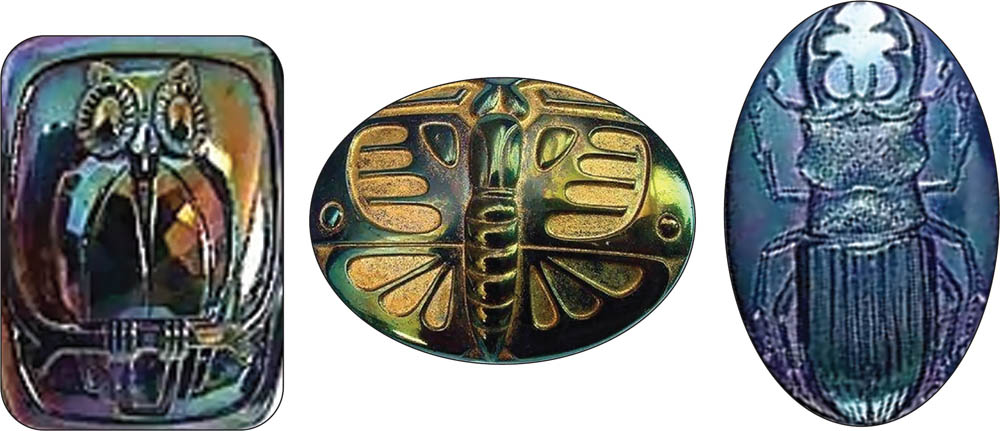

Many Edwardian hat creations were seemingly more of an event than an item of headgear and a spin off from these enormous hats was that from around 1902, aided by supports called ‘Pompadour’ frames (constructed from natural wavy hair and something of a hangover from Victorian times), around which the ladies’ hair was gathered and worked in, and often supplemented with pads called ‘rats’ to bolster the hair. On top of this, whole ranges of beautiful hatpins were developed with many featuring ornate decorations at the non-pointed end. The creative people within the hatpin industry really went to town producing beautiful little works of art. Birmingham became the main UK production centre for these accessories along with firms like Charles Horner of Halifax.
Today, there is an enduring interest in Edwardian hatpins around the world and the following images of amazing examples are reproduced by kind permission of Leslie Woodbury of the American Hat Pin Society and Paul Moorehead of the Hat Pin Society of Great Britain respectively.
There follows an amazing array of beautiful hatpin decorations from both America and the UK. One can only admire the skill, flare and creativity which came into play in the production of these stunning fashion accoutrements.













Wilhelm Staerz of Czechoslovakia and the long established Abel Morrall Ltd of Redditch – were long time manufacturers of various sorts of needles. Japan too, never a country to miss the half chance, whilst not wearing hatpins themselves, saw an opportunity and made a commercial contribution to what was on offer – becoming an established supplier of the ceramic decorated hatpin embellishments which, at the time, were known as ‘Satsuma’ style and often featured figures of geishas and suchlike. America too, with a population of over eighty million in 1905, was carried away by the hat boom and with a hat crazy population of that size, there was business to be done. Quite a few US manufacturers sprung up such as Unger Bros. Amgel, Lincoln, Alvin Manufacturing, The Sterling Company, William Kerr, Day & Clarke, and R. Blackington & Co together with quite a few smaller manufacturers in the Massachusetts region.


Around the world, one could find the work of superb hatpin designers coming to the fore with the likes of Barton Jenks, James Wooley, William Codman, George Gebelein and probably the greatest of them all – Louis Tiffany.
On the near continent, the Paris companies of Lalique and Fabergé were both involved with the manufacture/supply of the finest quality, top of the range hatpins. That said, there were also many pins imported from Bohemia in general with the hatpin heads featuring a multitude of materials such as gold, silver, cloisonné, mother of pearl, Viennese enamel and even insects. Some even had tiny peep-scope devices (very much along the lines of the old Victorian ‘Stanhopes’) offering scenic views such as Niagara Falls while others, more politically motivated, featured images of suffragettes. The choice was enormous. On the subject of suffragettes, who can forget the old British Pathe film scenes at the Epsom Derby on 4 June 1914 when Emily Davidson was mortally injured while attempting to make a political protest as she ran in front of George V’s racehorse Anmer; to see her large hat rolling forlornly across the grass moments after the collision is poignant indeed.